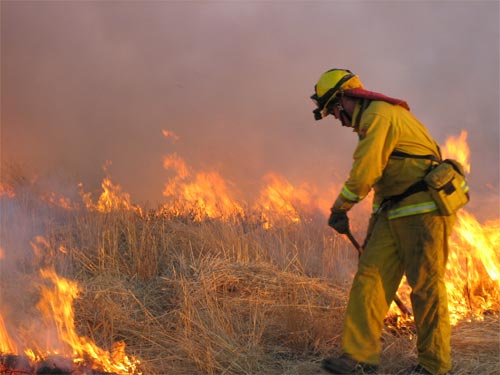When we face a traffic accident or a kitchen fire, who do we call? We have expectations for rapid emergency responses and often, we don’t think too hard about how these services came to be or what is needed to ensure they continue. We know that if a fire breaks out, we need to call 9-1-1 and firefighters will appear to save the day. We know if we have an accident, it is the fire department that will both extricate us from mangled vehicles as well as attend to our injuries. This is a public safety service we share, but it wasn’t always that way.
Fire protection services were once a private endeavor and only if contracted would the fire department come to the rescue. Europe adopted a “no fee” structure in the 18th century. America waited a bit — in 1853, Cincinnati was the first American city to boast a fulltime, paid, trained fire department. By the 1980s, 9-1-1 became nationally available to cover all public safety emergencies.
Sonoma County Fire Services have been in operation for over 150 years. Today most calls involve medical services, typically as the first responder on scene. As the world changed, Fire Protection and Emergency Services have had to. To be clear, this has been a challenging process for the fire department to both meet the needs of the community and search for ways to remain sustainable and effective. I have met with many of the fire chiefs across the county to hear their concerns and find solutions.
How big are we? Sonoma County Fire and Emergency Services Department is comprised of 15 volunteer fire companies, responding to over 1,000 calls per year in excess of 600 square miles in the unincorporated area. The Department provides a full range of emergency and non-emergency services for residents and visitors to Sonoma County through five divisions: Administration; Fire Operations and Training; Fire Prevention; Hazardous Materials; and Emergency Management. When we look back on Lake County, it is clear how critical it is to have a fire and emergency department that is fully prepared for every possibility, including animal rescue and sheltering.
California’s financial crisis in the early 1990s resulted in state policy that shifts property tax away from local governments and towards schools to meet state obligations. Additionally, insurance and safety standards continued to increase costs for fire agencies.
In 2014 an Ad Hoc Committee of the Sonoma County Board of Supervisors was formed to develop recommendations for a more effective, efficient, and sustainable fire services system, particularly in unincorporated areas. The Ad Hoc developed a multi-phased project, and appointed an Advisory Committee composed of 70 members from most of the fire and emergency services agencies. Clearly the system needed to evolve and adapt again, just as demand increased for fire protection services along with costs.
The Advisory Committee recognized that funding for fire/emergency services in the unincorporated areas of Sonoma County has not kept up with the demands and costs of these services. Other challenges include staffing and the need to recruit and retain volunteers, as well as the aging of equipment and facilities. Imagine how difficult it is in today’s economy to recruit people to volunteer time to train and respond to emergencies. Firefighters too are affected by the cost of living and lack of housing issues throughout the county.
While salaries and benefits account for 57 percent of average expenditures for all 20 fire districts in Sonoma County, they still account for 45 percent of average expenditures for those that are mostly volunteer operations. Other major expenditures include services and supplies, maintenance, and dispatch costs.
Taxes account for 86 percent of average revenues for all districts and 83 percent of those that are mostly volunteer operations. Other revenues come from ambulance billings (none of the volunteer districts operate ambulances), donations and reimbursements. This is why pancake breakfasts and other fundraising activities are critical for the survival of a department – not so different from school bake sales.
In June 2015 the Fire Services Advisory Committee recommended a Regional Governance Model in order to institutionalize the ongoing effort to incentivize collaborations between fire agencies and use resources more effectively for fire service delivery. The recommended Regional Model starts by dividing the county into seven regions with the boundaries of the seven current zones used in emergency dispatch for calls for service today. The Regional Model also includes a count-wide Fire Services Advisory Council.
By the end of April 2016, The Fire Services Advisory Council is scheduled to be established. It will include representatives selected by the seven regional councils and two selected by the Board of Supervisors. Fire agencies from Sonoma Valley met and selected Fire Chief Mark Freeman of Sonoma Valley Fire and Rescue and Fire Chief Ray Mulas of Schell-Vista as the primary and alternate regional representatives on the Fire Services Advisory Council. The new Council will present recommendations to the Board of Supervisors related to county-wide fire service needs.
The overall goal of the Advisory Council is to continue working towards augmenting an effective, efficient, and sustainable fire service delivery through Sonoma County. One action item currently being executed through the County Administrator’s office is the approval of a contract to pay annual fire dispatch fees to REDCOM (Redwood Empire Dispatch Communications Authority).
We are thankful for the men and women who provide our community with Fire Protection and Emergency Services. I am especially grateful for the many people who came together to collaborate on solutions and find a path forward.
You can learn more about the Fire Services Project, and view the presentations and press releases here: http://sonomacounty.ca.gov/CAO/fire-Services-project/




Be First to Comment